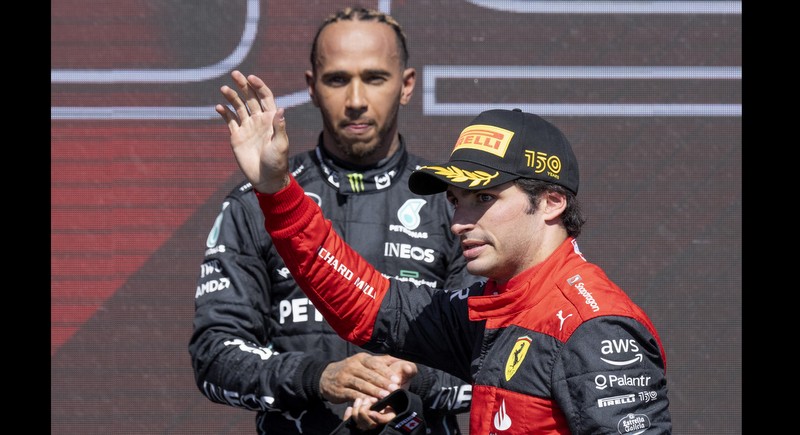There’s been only one driver in the history of Formula 1 who’s gone their entire career without a winless season, but Hamilton is staring down the barrel of that enviable victory streak coming to a cruel end.
Just 10 races ago the seven-time world champion looked set to add an unprecedented eighth title to his collection. Halfway through last year’s Abu Dhabi Grand Prix he was on track to win his ninth round of the season and decide the bitter battle with Max Verstappen in his favour.
Of course circumstance had other ideas, and a late safety car flipped the race in the Dutchman’s favour, delivering him a maiden crown and leaving Hamilton with his destiny unfulfilled.
Not matter. Mercedes, the undisputed powerhouse of F1 since 2014, was positioning itself to maximise its chances under new rules this season. Hamilton would get a second opportunity, and this time he’d leave nothing to chance.
Except that’s not what’s happened. The ambitious Mercedes car that was supposed to see off all comers has flopped, its novel design proving too difficult to tame. It’s only very briefly shown flashes of the speed its designers are adamant it has locked away deep inside it, but neither the engineers nor the drivers have been able to find the keys to unleash it permanently.
It’s left Hamilton nine races deep into what was supposed to have been his fightback season with nothing more than a pair of third places to show for it, his most paltry start to a campaign since 2009.
Way back then it took him until the 10th race to score a victory, and from then until the end of the season he stepped onto the podium in every race he finished.
The prospects of a similar turnaround this year are limited.
The W13 is an extremely sensitive beast. Having worked out the aerodynamic ‘porpoising’ that slowed it down in the early rounds, Mercedes now finds it can’t get close to its predicted peak downforce levels without running the car extremely close to the ground. To achieve this it’s having to run the car with a very stiff ride.
That was okay in Spain last month, where it brought its first major update package and had one of the race’s quickest cars, so much so that Hamilton recovered from a first-lap crash to finish fifth, exhibiting race-winning pace along the way.
But Formula 1 has visited only street circuits since then, and at every one of those tracks the car has threatened to shake Hamilton and teammate George Russell into submission. Podiums in Azerbaijan and Canada were borne of fortune rather than pace.
But the sport returns to Europe this weekend for a run of race on permanent circuits, which are wide and smooth and mostly flat, offering Mercedes another opportunity to stretch the W13’s legs.
Without having to worry about compromising between the violent bouncing and driver safety, the 2021 championship-winning team should be able to focus on squeezing the most it can from its troubled package, and if the Spanish Grand Prix was a true indicator of potential, the Silver Arrows might be a bona fide victory contender for the first time this season.
Could it be the reprieve Hamilton needs to keep his record of winning at least one race per season alive?
He’ll have to overcome teammate George Russell first, the young Briton having proved more than capable of competing at the front this season while Hamilton has busied himself experimenting with set-up to benefit the team.
But the seven-time champion has always been lifted by the emphatic support of his home crowd. Last year’s race, recovering from a 10-second penalty to victory after a crashing with Max Verstappen on the first lap, was only his latest dominant home drive.
If Mercedes can deliver a competitive car, it’ll take everything Hamilton’s got to hustle it over the line first, especially ahead of the fancied Ferrari cars, which are expected to go well here, and the always quick Red Bull Racing machine piloted by former title rival Verstappen.
Who could’ve thought just 10 races ago that 2021’s protagonists might take all this time to take up arms again.








